Technology
Features of Ultra-Low Phase Noise OCXO (DuCULoN®) for Audio
[  PDF ]
PDF ]
1. Background about DuCULoN®
To accurately reproduce a high-resolution sound source (*1), you need to increase the accuracy of the high-resolution data processed by the digital/analog converter (DAC), which can cause sound degradation. It is said that the accuracy of this DAC depends on the characteristics of the supplied master clock signal. As the resolution of the high-resolution sound source increases, oscillators with low phase noise characteristics are required for the master clock signal source.
We commercialize DuCULoN® (Dual Crystal Ultra Low Noise OCXO) as OCXO for high-resolution audio with ultra-low phase noise characteristics. This section introduces technologies for lowering phase noise of DuCULoN®.
(*1): High-Resolution Audio
To digitize the analog signal, sampling is performed at a constant frequency. To reproduce the sound as close as possible to the original sound, it is necessary to increase the sampling frequency and bit rate. Compared to CD sound sources, the current high -resolution sound source has improved both the sampling frequency and bit rate, enabling digitization with sounds closer to the original.
2. Lower phase noise by DuCULoN®
In designing DuCULoN® to reduce noise, we are focusing on improving phase noise response in the audible range (20 Hz to 20 kHz), which is considered to be the most effective for sound quality. Fig. 1 shows the simplified low phase noise circuit of DuCULoN®. The low-noise circuit design uses two crystal unit's with high quality factor. Phase noise characteristics can be reduced by passing the signals output from the oscillator loops composed of Amp.1 and X-tal 1 shown in Fig.1 through a narrow-band filter (X-tal 2).
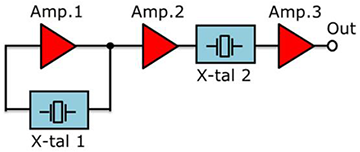
Fig. 1 Configuration of DuCULoN® Low Phase Noise Circuits
Fig. 2 shows the attenuation characteristics of three filters with different bands.
In addition to LC filters, common small Monolithic Crystal Filter (MCFs) has too wide bandwidth to expect very little filtering in the audible band.
Therefore, DuCULoN® adopted a crystal unit with high quality factor as a narrow-band filter, which has the attenuation characteristics shown by the red line in Fig. 2.
This is the same large-sized crystal unit used as the resonator.
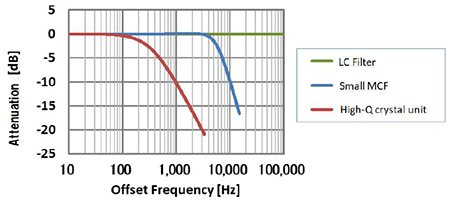
Fig. 2 Typical Filter Attenuation Characteristics
Fig. 3 shows the inner architecture of DuCULoN®. The high quality factor crystal unit of quality factor used for the resonator and filters is located in the center of OCXO interior.
Here, the desired low phase noise characteristics cannot be obtained unless the oscillation frequency in the oscillation loop including X-tal 1 in Fig. 1 matches center frequency of the filter including X-tal 2.
Therefore, inside DuCULoN®, the location of the two high quality factor crystal units and the temperature control circuit are devised to uniformly heat the crystal units, thereby improving temperature stability.
In addition, impedance optimization of the entire circuit is performed when a narrow-band filter is added.
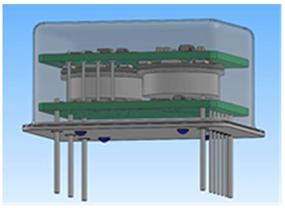
Fig. 3 Internal structure of DuCULoN®
Fig. 4 shows phase noise characteristics estimated from the filtering characteristics for the difference between DuCULoN® and the conventional OCXO. It can be estimated that frequency offset 10 kHz is improved by about 10 dB by improving the narrowband filters from around frequency offset 10 Hz. Then, it can be expected to achieve-175 dBc/Hz in the floor noise region.
In this way, two crystal unit signals can be used to significantly reduce noise in the audible band, so they are called DuCULoN® (Dual Crystal Ultra Low Noise OCXO).
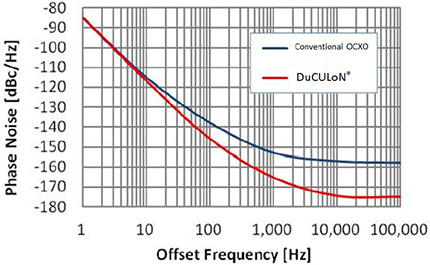
Fig. 4 Comparisons of phase noise Characteristics between DuCULoN® and Conventional OCXO (Estimates)
3. Relationship between Near-Carrier Noise and Floor Noise
Fig. 5 shows phase noise characteristics when drive level of the crystal resonator is changed in the conventional OCXO. This results in a phase noise response when drive level is increased as the color becomes darker.
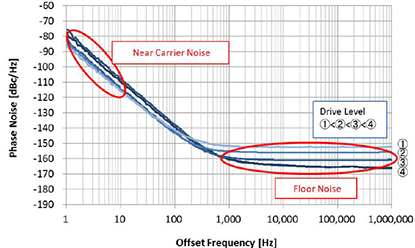
Fig. 5 Relationship between drive level and phase noise Characteristics
To improve floor noise, generally increase drive level of crystal unit.
This increases the signal level, which reduces the C/N (Carrier to Noise ratio) and improves the floor noise.
Increasing drive level, on the other hand, increases the distortion due to nonlinear effects in crystal unit, which degrades quality factor of crystal unit.
As a result, the noise near the carrier will deteriorate. Thus, it is known that near-carrier noise and floor noise have trade-offs with respect to the magnitude of drive level.
The graph in Figure 5 also shows the trade-off relationship. DuCULoN® does not use this trade-off and has the following additional circuitry:
4. Advantages of DuCULoN® Circuits
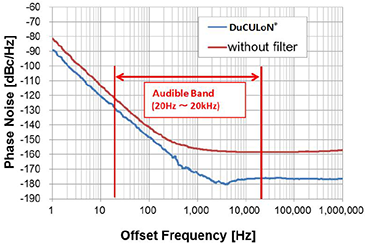
Fig. 6 Phase Noise Characteristics with and without DuCULoN® Narrow-Band Filters (Actual Measurements)
Fig. 6 shows the actual measured phase noise characteristics with and without narrow-band filters in the actual DuCULoN®.
As the result estimated in Figure 4, it can be seen that the effect of a narrowband filter appears in the audible band.
The rattling form of the floor noise area of DuCULoN® (blue line) is due to the fact that it is close to the measuring limit of the measuring instrument.
The difference from Fig. 4 is that near-carrier noises also have better DuCULoN® characteristics. The unfiltered OCXO is designed considering the trade-off between near-carrier noise and floor noise.
In contrast, DuCULoN® oscillation-loop circuits are designed to give priority to near-carrier noise.
In other words, since DuCULoN® improves floor noise to the limit due to the effects of narrowband filters even if drive level is not increased, the designs of oscillation loop circuits can adjust drive level to optimize the near-carrier noise.
5. Future prospects
Low floor noise characteristics are always emphasized when explaining the low phase noise characteristics of DuCULoN®.
However, based on previous discussions, it can be seen that DuCULoN® has a significant advantage in that near-carrier noise and floor noise are well-balanced and low-noise.
In the future, we intend to realize further low phase noise by reconsidering the oscillation circuit configuration that can maximize quality factor of crystal unit in addition to DuCULoN® noise reduction technology.
In addition, we are considering a 10MHz low-noise OCXO and a 100MHz high-frequency OCXO as standard sources that emphasize near-carrier noise characteristics.
